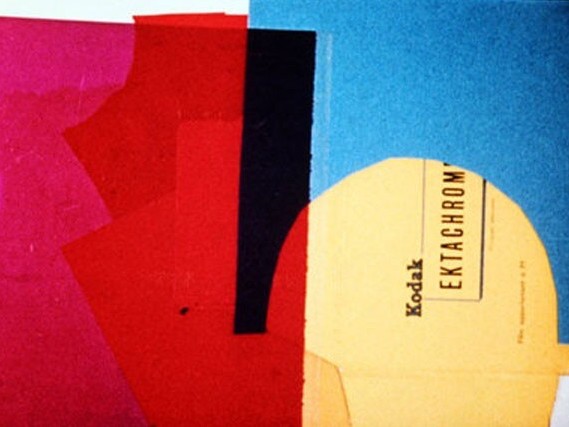
This relentless, rapid-fire animated film combines flashes of everyday objects – including the animator’s own hand – with bright textural patterns. Breer’s disorienting procession of still and moving images is accompanied by a nonsensical French narration voiced by fellow filmmaker Noël Burch: rather than orienting the viewer, it further abstracts the work, adding fragments of sound to the visual mix. (MoMA)
“Single images one after another in quick succession fusing into motion... this is cinema... Whereas the usual intention in animation has been to represent natural movement and to do this by the gradual modification of forms permitting the eye to blend them into fluid motion, I began treating the single images as individual sensations to be experienced separately, more in counterpoint than in harmony. I find myself combining freely very disparate images and finally using continuous motion simply as a means to connect up the various fixed images.”
Robert Breer1
“I exposed six feet of film one frame at a time, as usual in animation, but with this important difference – each image was as unlike the preceding one as possible. The result was 240 distinctly different optical sensations.”
Robert Breer on the original 1954 ten-second test for Recreation2
“‘What the hell will this look like?’ you know, that kind of thing, and ‘I don’t want to know... whether this is cinema or not; it doesn’t matter.’”
Robert Breer3
“In these very short films, Breer formulated a single-frame aesthetic and his work was arguably the first to demonstrate this approach. (...) Breer's rapid montages challenge not only what a viewer sees and how, but also foreground the animation process. The most influential of these reflexive ‘retinal collages’ is Recreation. (...) After seeing a silent version of Recreation, Noel Burch wrote a text and recorded it for the film. An aural equivalent of the images, the text is a nonsense poem (in the Dada tradition): its words create puns on the screen objects. (...) Recreation's unique visual and aural bombardment left a very significant trace. [It] exhibited yet another experimental filmmaking style that challenged the emerging, abstract expressionist-influenced lyrical cinema. Rejecting the neo-Romanticism of Stan Brakhage, Breer developed the core of a reflexive minimalist/structuralist approach that would be further explored and codified in the late 1950s by Peter KubeIka. Breer met KubeIka at the 1958 Brussels Experimental Film Festival and discovered that, although working independently, they had formulated the principles of metric cinema.”
Greg S. Faller4
- 1Robert Breer, “A Statement [April 1959],” Film Culture 29 (1963), 73.
- 2Quoted in Lois Mendelson, Robert Breer: A Study of His Work in the Context of the Modernist Tradition (Ann Arbor: UMI Research Press, 1981), 73.
- 3Jonas Mekas & P. Adams Sitney, “Interview with Robert Breer,” Film Culture 56–57 (Spring 1973), 44.
- 4Gregg S. Faller, "Unquiet Years: Experimental Cinema in the 1950s,” In: Peter Lev (ed.), Transforming the screen, 1950-1959 (Berkeley: University of California Press, 2003), 297-299.

